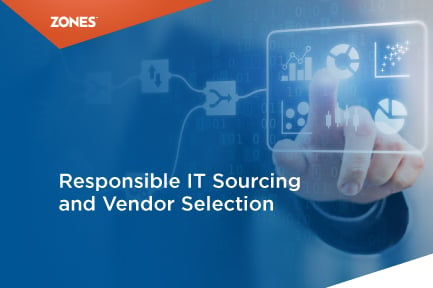Why Is Zero Trust Architecture the Backbone of Modern Cloud Security?
When you check the news, it seems like every other headline is about a data breach at a big tech company scrambling to recover. It’s becoming all too...
3 min read
![]() Zones
:
Jul 20, 2024 10:34:15 AM
Zones
:
Jul 20, 2024 10:34:15 AM

The digital landscape is constantly evolving, and so is the risk to digital security. From complex phishing attacks to data breaches, hackers are relentless when it comes to acquiring sensitive information and making money. By 2025, the global economy’s costs incurred from cyber security could reach $10.5 trillion, according to Cybersecurity Ventures estimates. Such an enormous figure indicates a greater need for organizations to mainstream security as part of their strategy.
This blog post lays out a comprehensive security strategy for small- and medium-sized businesses in 2024. It is imperative that companies adopt these security practices as they will considerably improve their security standing, mitigating the risks of potential future threats or cyberattacks.
Usually, employees are the first point of reference in stopping cyber threats. Even the most tech-savvy individuals can be tricked by phishing emails, social engineering tactics, and malware. Go for comprehensive cybersecurity awareness trainings that will allow your team to identify and evade such threats, thus becoming an active party in ensuring your security posture. Employee training investment is associated with a 30% decrease in data breach costs, according to a Ponemon Institute report.
Multi-factor authentication (MFA) adds another layer of security by requiring two or more verification modes before granting access to any system or data. These may include passwords, security codes, and biometric verification, among others. By implementing MFA on all critical systems, organizations can minimize unauthorized entry risk. Even if a password is disclosed, the additional steps make it much harder for hackers to get through this way.
It seems simple. However, many cyberattacks exploit unattended and logged-in devices. Inculcate a culture of logging out of company accounts and applications whenever a session is complete or the system is not in use. This simple step minimizes the risk of unauthorized access in the case of unattended devices.
According to TechReport, more than 50% of employees globally use identical passwords for all accounts they access from work. Strong and unique passwords play a great role in preventing data breaches and improving the online security of organizations. Encourage employees to create complex passwords and change them often (i.e., ideally once every three months). Consider implementing a password manager to simplify this process.
Zero-trust security assumes that threats can come from both outside and inside the network. Implementing zero trust involves verifying every access request as though it originates from an open network. This principle minimizes the risk of internal and external threats. Gartner predicts that by 2023, 60% of enterprises will have adopted a zero-trust security strategy.
There is no such thing as a perfect security system. The response team in the organization should have a well-structured plan for responding efficiently to cyberattacks. The plan must identify roles, responsibilities, communication protocols, and procedures for containment, eradication, and recovery.
Software vulnerabilities are a constant threat, and ensuring automated security update installation on systems is important to safeguard against data attacks. Regular data backups are equally crucial across all devices and systems of the organization. In the event of a cyberattack, a regular data backup ensures business continuity and minimizes downtime.
Managing the security of a complex IT ecosystem with multiple vendors can be challenging. Consolidating your vendors can streamline your security efforts and potentially reduce the overall attack surface. By working with fewer vendors, you can establish clear security expectations and simplify security monitoring. A Gartner report states that 60% of organizations will use fewer than three vendors for 80% of their security needs by 2025 to minimize risks.
Artificial intelligence (AI) has become a powerful tool in the fight against cybercrime. Today, AI-based security solutions can analyze large amounts of data in real time by monitoring and detecting suspicious activities and potential data risks. This allows your IT security teams to focus on more strategic initiatives by lifting the workload burden.
The cyber threat landscape is always changing. Businesses must stay informed about the latest threats and security trends. Regularly attending cybersecurity conferences and webinars and reading industry reports can help you avoid potential risks.
By adopting these security practices, you can significantly strengthen your organization’s security against cyber threats in 2024. Remember, security is an ongoing process, not a one-time fix. By empowering your team, embracing new technologies, and staying informed, you can build a robust security posture and ensure your business thrives in the digital age.

When you check the news, it seems like every other headline is about a data breach at a big tech company scrambling to recover. It’s becoming all too...

Technology today has become an integral part of our lives, driving innovation and shaping how we live and work. However, as our reliance on...

Have you ever found yourself lost in the complexity of software licenses, wondering what steps to take? Fear not! Software Asset Management (SAM) is...